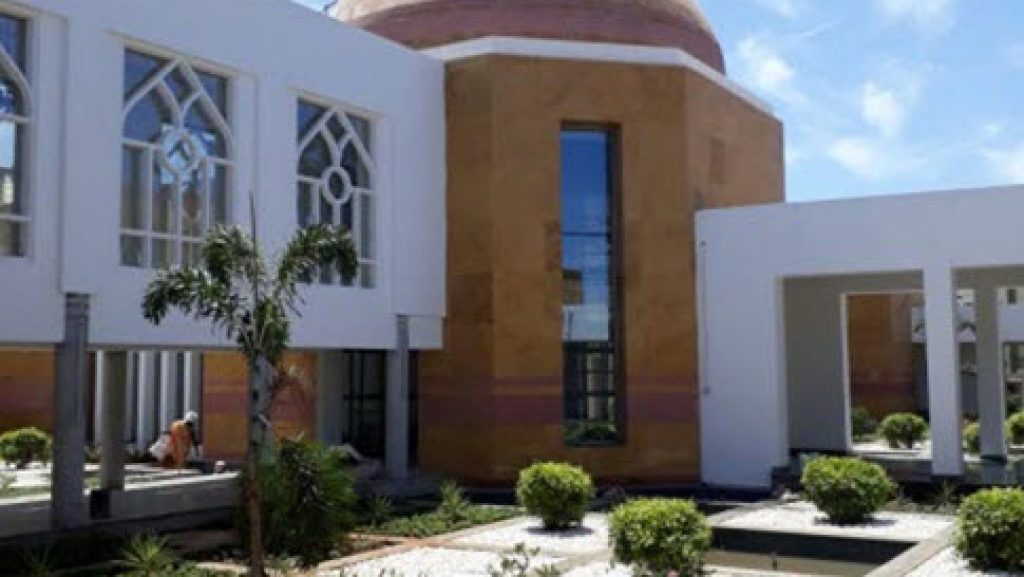Places to visit in Ramanathapuram district
Places to visit in Ramanathapuram district
Dr. APJ Abdul Kalam's Memorial
 Avul Pakir Jainulabdeen Abdul Kalam, better known as A. P. J. Abdul Kalam who was the 11th president of India. Kalam was born and brought up in Rameswaram and became a scientist and worked for DRDO and ISRO. After his sudden demise at Shillong on 27th July 2015, he was laid to rest at Pei Karumbu, Rameswaram on 30th July 2015. A memorial has been built at the burial site. Inside, the memorial, one can see the selected photos, paintings and miniature models of misssiles etc.,. The memorial is less than 1 km from Rameswaram.
Avul Pakir Jainulabdeen Abdul Kalam, better known as A. P. J. Abdul Kalam who was the 11th president of India. Kalam was born and brought up in Rameswaram and became a scientist and worked for DRDO and ISRO. After his sudden demise at Shillong on 27th July 2015, he was laid to rest at Pei Karumbu, Rameswaram on 30th July 2015. A memorial has been built at the burial site. Inside, the memorial, one can see the selected photos, paintings and miniature models of misssiles etc.,. The memorial is less than 1 km from Rameswaram.
Dhanushkodi
The southernmost tip of the rameswaram island is called Dhanushkodi. It was completely washed away by a cyclone in 1964. But the Kothandaramasamy Temple here remains intact. It is 18 KMs way from Rameswaram can be reached by road. A popular belief is that, it is where Vibishana a brother of Ravana surrendered before Rama. Dhanushkodi has a fine beach, where Sea surfing is possible.
Devipattinam (Nava Bashanam)
A coastal village is also known as Navashabashanam. It is believed that Lord Rama worshiped Navagraha here. The temple near by here, is dedicated to Devi, who is said to have killed the demon Mahishasura at this spot. Hindus perform religious rites for their forefathers here.
Pamban Bridge
The 2.2 km. length bridge connecting the Rameswaram Island and the mainland is the longest bridge in India constructed over a bay. It is also called as Pamban Bridge. Similarly the railway SCISSORS bridge connecting the island is noted for its unique opening to pass the ships through the sea.
Thiru Uthirakosamangai
18 KMs from Ramanathapuram is Uthirakosamangai. There is an ancient Siva temple, where the presiding deity is carved in Emerald. Annual Arudhra festival in December attracts a large number of devotees.
Ramanathaswamy Temple
The Holy abode of the Hindu God, Shri Ram (addressed so with all respect & humility) is a virtual paradise for the devout. No Hindu’s journey is complete without a pilgrimage to both Varanasi and Rameswaram for the culmination of his quest for salvation and is hallowed by the epic ‘Ramayana’. Folklore mentions about God Ram’s presence in this land, after his 14-year exile.
Local legend has it that Shri Ram was helped back into Rameswaram and into India by his brother Lakshman and Hanuman along with his band of thousands of monkeys, after finally emerging victorious against the demon – Ravana. They helped build a bridge with rocks from the sea and shores to cross the ‘Sethu canal’ and reach Lanka. Lord Rama is also believed to have sanctified this place by worshipping and glorifying Lord Shiva and hence marks the confluence of Shaivism and Vaishnavism and is thus revered by both Shaivites and Vaishnavites alike and thus there is a strong belief that bathing in the 22 ‘Theerthams’ or natural springs is a step forward in enlightenment. Therefore, Rameswaram has rightly been declared as one of the National Pilgrim Centres in the count.
The Ramanathaswamy temple by itself is a delight for every tourist. With its magnificent, imposing structure, long corridors, aesthetically carved pillars, the temple is adorned with a towering 38-metre ‘Gopuram’. The temple itself was built by rulers since the 12th century with Sethupathy Maravar beginning the construction of the grand Ramanathaswamy temple that boasts of the ‘Third Corridor’, completed by his successor, Maravar – the longest one in Asia with a 197-metre span from East to West and a 133-metre span from South to North, the third largest in the world! It is said that Swamy Vivekananda offered prayers at this temple in 1897. It is also one of the twelve Jyothirlinga temples, where Shiva is worshipped in the form of a Jyotirlingam.
Last Modified : 7/1/2021
Provides information about Green Resilient Rameswa...
